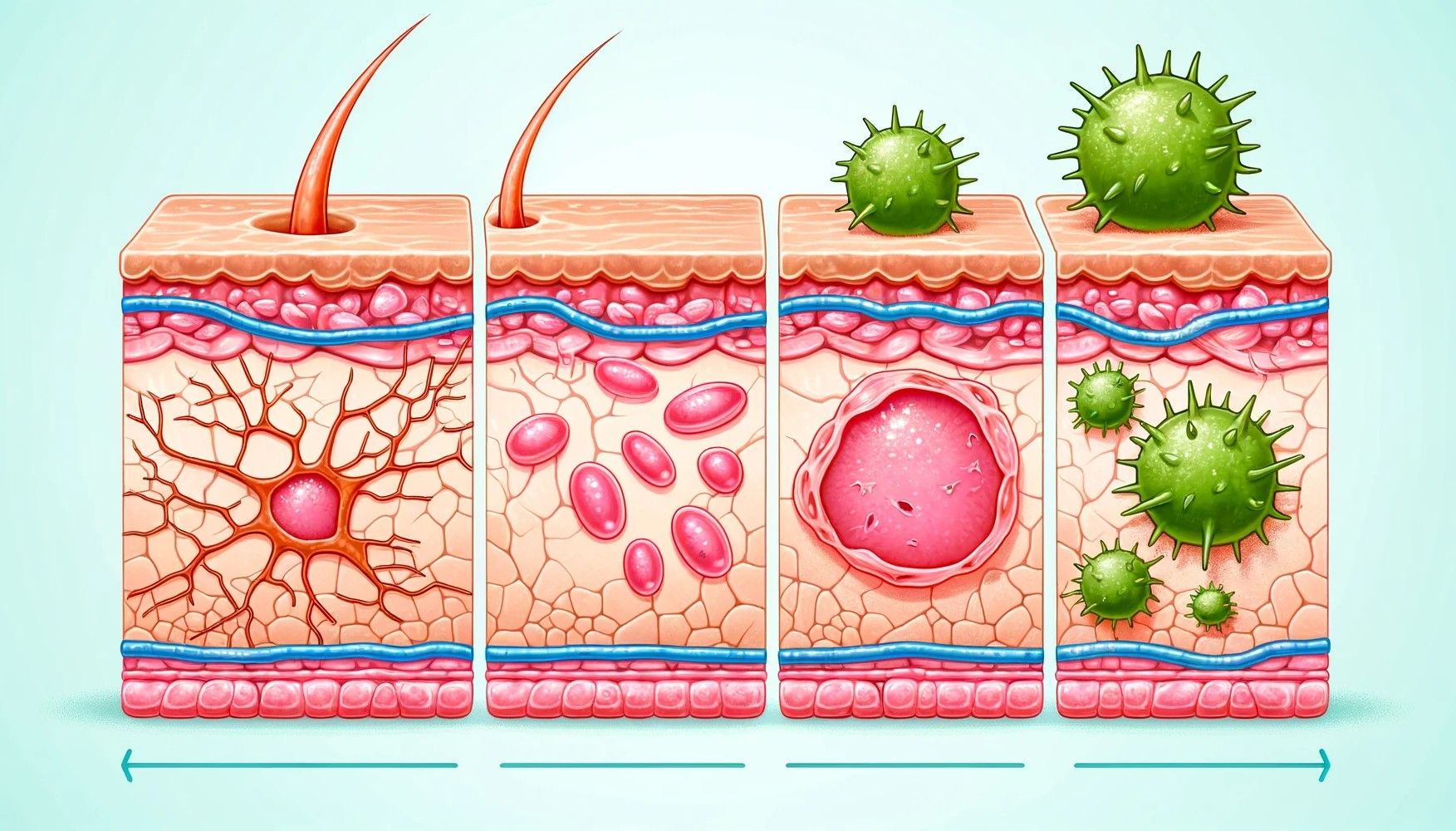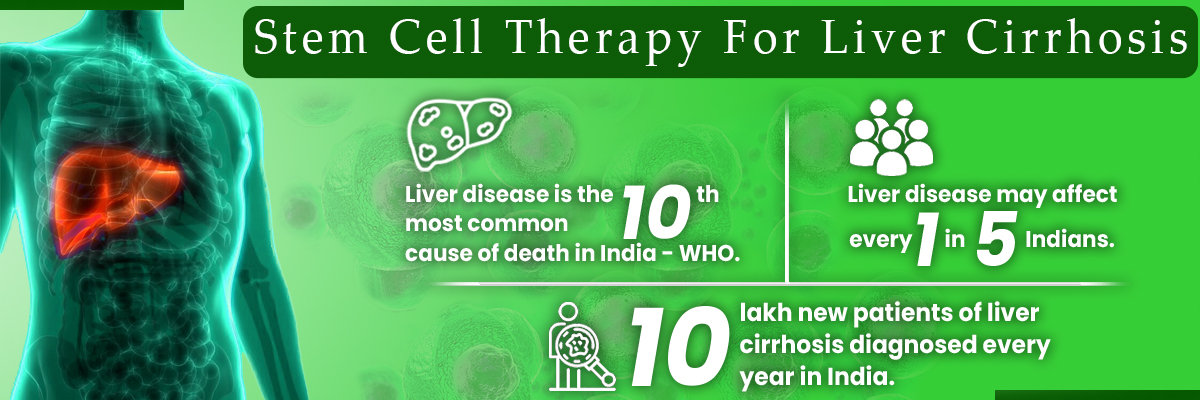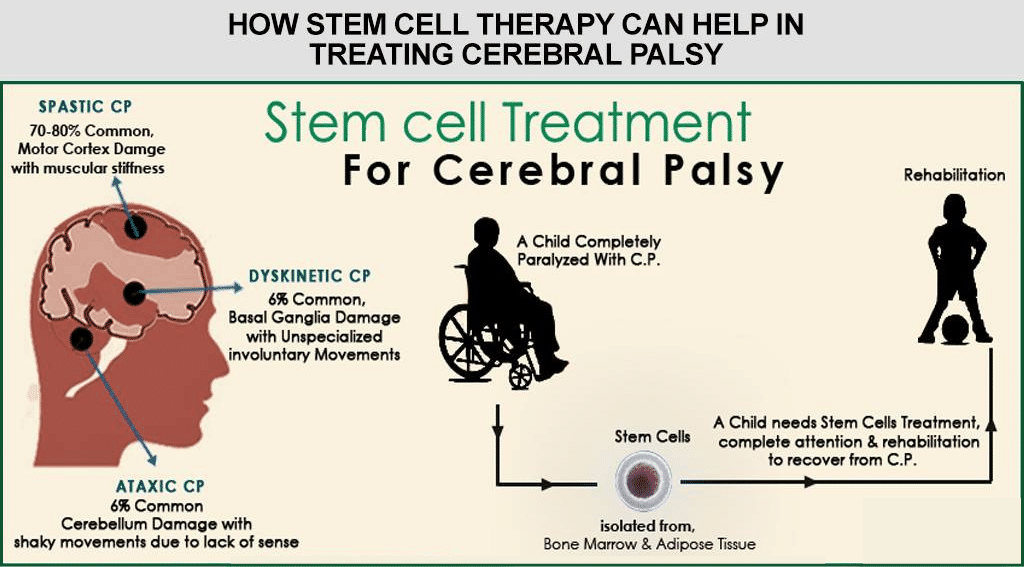Stem cell therapy has garnered immense interest globally, especially in the field of dermatology. In India, skin disorders and damage due to various factors such as pollution, aging, and medical conditions are prevalent. The demand for advanced treatments is rising, and the Indian skincare market is projected to grow significantly.
According to the Indian Dermatology Society, over 60% of urban Indians face skin issues at some point in their lives. This article delves into the promising realm of stem cell skin regeneration, exploring its potential, current applications, and the regulatory landscape, including FDA approval status.
Can stem cells regrow skin?
Yes, stem cells can indeed regrow skin by promoting the repair and replacement of damaged tissues. Stem cells possess a unique ability to differentiate into various cell types, making them invaluable in regenerative medicine. The skin regeneration process primarily involves:
- Activation: Stem cells are activated by signals from damaged tissues.
- Differentiation: These cells differentiate into specialized skin cells.
- Migration: They migrate to the site of injury.
- Integration: New cells integrate with existing tissues to repair and regenerate skin.
Research studies have demonstrated that skin stem cell therapy can effectively treat conditions such as burns, scars, and chronic wounds. For instance, a study published in the Journal of Investigative Dermatology showed significant improvement in wound healing in patients treated with stem cell-derived therapies.
Can Skin Fully Regenerate?
While stem cells can significantly enhance the skin's ability to heal and regenerate, the extent of cell regeneration varies. Complete skin regeneration, restoring the skin to its original state, depends on several factors, including the severity of damage, the type of stem cells used, and the patient's overall health.
Factors Influencing Skin Regeneration
- Type of Stem Cells: Different stem cells, such as embryonic, adult, and induced pluripotent stem cells (iPSCs), have varying capabilities.
- Extent of Damage: Minor injuries heal faster and more completely compared to severe burns or chronic wounds.
- Patient's Health: Conditions like diabetes or vascular diseases can impede the regeneration process.
In many cases, stem cell therapy can result in substantial improvement, reducing scars and promoting healthier skin, but achieving full regeneration akin to the original skin is still a goal for future research.
But how exactly do stem cells play a role in this transformative process? Let's dive deeper.
How Are Stem Cells Utilized for Skin Regeneration?
Stem cells are used in skin regeneration to replace damaged or aging skin cells effectively. They differentiate into various cell types, making them ideal for rejuvenating the skin. Stem cells have the remarkable ability to transform into specific types of skin cells, like keratinocytes, fibroblasts, and melanocytes. It plays a vital role in promoting health and enhancing the overall appearance of our skin.
You might wonder, how do these tiny yet potent cells work their magic? The answer lies in their remarkable ability to regenerate.
How do stem cells regenerate damaged skin?

Stem cells promote skin regeneration by stimulating the production of collagen and elastin, essential proteins for skin structure and elasticity. They also assist in angiogenesis. This is the formation of new blood vessels. This helps improve blood flow and nutrient delivery to the skin. Moreover, stem cells can modulate the skin's immune response. This aids in the repair of damaged tissue and the management of inflammatory skin conditions.
Is stem cell therapy for skin regeneration FDA Approved?
Currently, stem cells for skin regeneration are not FDA approved. There are limited FDA-approved stem cell therapies for skin regeneration. Treatments using autologous stem cells (derived from the patient's own body) are more likely to be approved, as they pose fewer risks of immune rejection.
Numerous clinical trials are underway, exploring the efficacy and safety of various stem cell treatments for skin conditions. These trials are essential for gaining FDA approval. Choosing an facility that follows FDA regulations is highly recommended, as it guarantees a superior level of safety and quality for the procedure.
If you are looking where to get stem cell therapy check out the list of stem cell treatment hospitals in India
What Are the Benefits of Using Stem Cells for Skin Regeneration?
The benefits of stem cell therapy for skin regeneration are extensive. It can reduce the appearance of fine lines and wrinkles and fade scars. It can also improve skin conditions like psoriasis and eczema. Moreover, stem cell treatments often yield longer-lasting results than traditional skincare products. These therapies can provide not only aesthetic improvements but also enhance skin health.
- Wound Healing: Stem cells can help your wounds heal faster. This is especially beneficial for stubborn wounds, burns, or ulcers. Think of it as lending a helping hand to the body's natural repair process.
- Addressing Skin Diseases: Are you dealing with skin issues like vitiligo or psoriasis? Stem cells might offer some relief. They can help regenerate healthy skin tissue and potentially modulate the immune system.
- Anti-aging Perks: Stem cells have a role in rejuvenation. They can support collagen production and improve skin hydration. The result? A more youthful appearance with fewer wrinkles.
- Skin Grafts: In cases of severe burns or significant skin loss, stem cells can assist in creating skin grafts. This approach can be a lifesaver when traditional graft options aren't viable.
- Reducing scars: Stem cells minimize scarring by encouraging regular skin tissue growth over fibrous ones.
- Tailored Treatments: Using a patient's own stem cells minimizes the risk of adverse reactions. It's like a custom-fit solution for your skin!
- Hair Loss Solutions: Stem cells could address hair loss issues, potentially stimulating growth. It offers hope to those facing conditions like alopecia.
- Genetic Skin Disorder Treatments: Stem cells can be the key to certain genetic skin conditions. They can be modified to rectify genetic defects and then help improve the skin's overall health.
- Protection from the Environment: Stem cell skincare might also offer a shield against things like UV rays and pollution.
It sounds unbelievable, right?
But, as you know, success does not come without its fair share of challenges.
Side Effects Associated with Stem Cell Treatments for Skin
Although stem cell therapies for skin regeneration are generally considered safe, there are potential risks. Possible risks of stem cell procedures may include the potential for infection. The formation of scars and, in rare cases, complications to get pregnant. Choosing a qualified professional and following post-treatment instructions is crucial to minimize these risks.
Infection: There is a small risk of introducing bacteria during an injection. Sterilization and aftercare are important.
Tumor Formation: Now, it’s quite rare, but there’s a potential for cells to grow unexpectedly, leading to tumors.
Immune Rejection: If the stem cells come from another person, your body might not recognize them.
Got scared?
Don't be. Contact us today to make an informed decision!
What Does the Research Say About the Efficacy of Stem Cells in Skin Regeneration?
Ongoing research shows promising results. Stem cell therapy is demonstrating efficacy in various skin conditions and rejuvenation procedures.
Studies show that epidermal stem cells have the potential to regenerate skin. Due to this, several clinical trials have focused on it as an alternative treatment option.
Recently, the concept of somatic stem cell differentiation has been observed, and this has been emphasized in regenerative medicine. In addition to epidermal stem cells, somatic stem cells will also participate in clinical trials aimed at repairing skin and soft tissue.
Investigations on different dosages of mesenchymal stem cells for wound healing have also been conducted. This indicates an active area of application.
How much is the cost of stem cell therapy for skin regeneration?
The cost of skin regeneration through stem cell therapy can vary significantly based on the treatment type and geographical location. In India, it is often more affordable compared to the UK, USA, and Australia. Stem cell therapy for skin regeneration in India is approximately 8000 USD to 12000 USD, making it a cost-effective option. These costs can differ further based on the clinic's reputation, location, and the extent of the procedure.
What is the success rate of stem cells for skin regeneration?
Do you know that the first case in scientific literature with a novel epidermal stem cell product showed 100% promising results?
Yes, you read it right. In the first case, an innovative autologous product derived from epidermal stem cells was utilized. It is truly remarkable that more than 90% of the patients achieved full graft survival for their surgical wounds, resulting in a staggering 100% success rate. Also, many patients experienced normal sensation at the healed graft.
Multiple factors influence the success rate of stem cell therapy for skin regeneration. These factors include:
- Your overall health
- The specific skin condition being treated
- The type of stem cell therapy
- Expertise of your doctor.
The success rates for skin healing in burn injuries have significantly increased using various skin substitutes. This hints at the effectiveness of new therapies for skin regeneration. Moreover, the stem cells can enable true skin regeneration and decrease scar formation. Preclinical and clinical studies have shown that bone marrow, adipose-derived, and other stem cells can significantly improve the wound-healing process in chronic wounds.
Your well-being is our priority - call us to book your appointment today
Who is eligible for stem cells for skin regeneration?
Eligibility criteria for stem cell therapy for skin regeneration can vary depending on the healthcare provider and the specific treatment. In general, patients should be in
good overall health,
free from certain contraindications, and
have realistic expectations.
Consult with your doctor to determine individual eligibility and suitability for the procedure.
After understanding the pros and cons are you ready to embark on your journey to getting youthful skin?
Stem cells for skin regeneration procedure
Take a look at the table provided below. It outlines the steps you should follow before, during, and after your treatment in order to maximize its benefits.
| Step | Description |
| Consultation and Evaluation | Schedule a consultation with your doctor. Discuss the medical history and treatment goals. Understand the procedure, including risks and benefits. |
| Customised Treatment Plan | Get your personalized treatment plan. Specific type of stem cell therapy, number of sessions, and expected results. Confirm the source of stem cells |
| Financial Considerations | Discuss treatment costs and payment options. Understand insurance coverage (if any). |
| Pre-Treatment Instructions | Receive guidance on preparation, such as dietary changes or medication adjustments. Follow specific instructions as directed. |
| The Procedure Itself | Undergo the stem cell procedure, which may vary based on therapy type. May involve anesthesia Stem cells are applied to the skin using injection, topical application, or a combination of both, depending on the treatment method. |
| Recovery and Aftercare | You may experience redness, swelling, or mild discomfort, which usually subsides within a few days. Follow post-procedure care instructions, including activity restrictions and medication. Support stem cell integration and healing. |
| Monitoring and Follow-up | Attend regular follow-up appointments. Discuss progress and make adjustments as needed. |
| Realistic Expectations | Follow post-treatment instructions Maintain realistic expectations and report progress. Full results may take several weeks to become apparent as the skin undergoes rejuvenation and regeneration. |
| Lifestyle Changes | Consider and implement recommended lifestyle changes to optimize treatment effectiveness. |
| Potential Side Effects | Be aware of possible side effects and complications. Report any concerns to the healthcare provider. |






